Innovative Tractor Attachments Enhancing Agricultural Efficiency
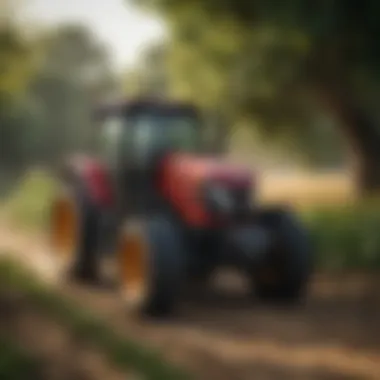
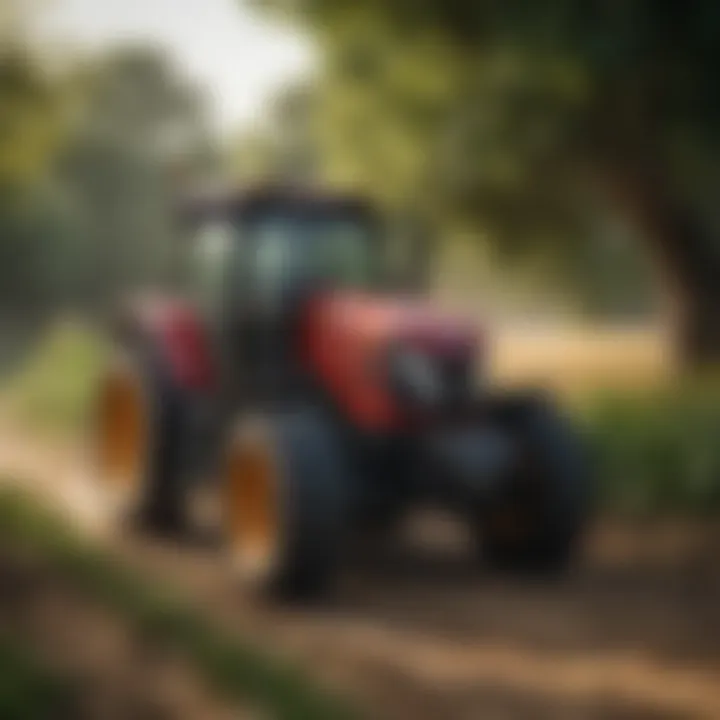
Intro
As the agricultural landscape shifts, the demand for efficiency and productivity has never been more crucial. Farmers encounter numerous challenges, from changing weather patterns to labor shortages. In this context, innovative tractor attachments emerge as pivotal tools, enhancing the ability of farmers to operate effectively. These attachments serve various roles, from improving soil health to optimizing crop yields.
Understanding the significance of these tools requires a closer examination of their definitions, evolution, and the current innovations shaping their functionality and application. This exploration reveals not only how these attachments work but also their profound impact on farming practices today.
Topic Overview
Definition and Importance
Innovative tractor attachments are additional implements designed to extend the capabilities of standard tractors. They include a wide range of tools, such as plows, seeders, and sprayers, each crafted to perform specific agricultural tasks. The importance of these attachments lies in their ability to improve efficiency, reduce labor input, and enhance the effectiveness of farming operations. By leveraging these tools, farmers can tackle a variety of tasks with greater precision and speed.
Brief History and Evolution
The journey of tractor attachments began with simple and rudimentary tools designed for basic farming tasks. Early attachments focused primarily on soil cultivation and planting. Over the decades, advancements in technology have led to the development of sophisticated equipment that integrates modern sensing, automation, and data analysis. For instance, GPS-guided sprayers ensure accurate application of fertilizers and pesticides, reducing waste and environmental impact. Today, the evolution continues, with a focus on sustainable practices and multifunctional equipment to meet diverse farming needs.
Key Techniques and Innovations
Sustainable Farming Practices
Sustainability in agriculture is an ongoing focus. Many innovative attachments now incorporate features that allow farmers to practice precision agriculture. This not only conserves resources but also improves crop health. Examples include:
- Soil sensors that measure moisture content and nutrient levels, allowing for targeted irrigation and fertilization.
- Cover crop rollers that help manage weeds without herbicides, promoting soil health.
Advanced Agronomic Technologies
The integration of technology in tractor attachments is reshaping agriculture. Innovations such as autonomous tractors and smart attachments are becoming commonplace. Some notable advancements are:
- Variable rate technology that adjusts the application of seeds and nutrients based on field conditions.
- Drones used in conjunction with tractor-mounted sprayers for targeted treatment of crops.
Practical Applications
Step-by-Step Guides
To maximize the use of innovative tractor attachments, farmers must understand how to select and integrate them into existing operations. A few steps include:
- Assessing Needs: Determine what tasks require improvement and research suitable attachments.
- Compatibility Check: Ensure attachments are compatible with existing tractor models.
- Training: Provide adequate training for operators to ensure effective use.
Case Studies or Real-World Examples
"The transition to advanced attachments has not only boosted productivity but also improved our sustainability practices," says John Doe, an early adopter of smart agricultural technology.
Examples across regions showcase the successes with innovative attachments. In the Midwest, farmers who integrated variable rate technology reported a %15 yield increase while minimizing fertilizer use, contributing to both economic gain and environmental stewardship.
Foreword to Tractor Attachments
In the modern agricultural landscape, tractor attachments play a crucial role in enhancing operational efficiency. These tools expand the capabilities of tractors, enabling them to perform a myriad of tasks that are essential for effective farming. Understanding tractor attachments becomes imperative for farmers looking to optimize their practices and improve productivity.
Definition and Importance
Tractor attachments are implements designed to be connected to a tractor, allowing it to perform specialized tasks. They vary widely in type and function, ranging from plows that prepare the soil to harvesters that gather crops. The importance of these attachments cannot be understated. They significantly reduce manual labor, save time, and increase the overall productivity of farming operations.
Moreover, as the agriculture sector faces increasing pressure to produce more food with fewer resources, innovative attachments become essential in adapting to such challenges. Modern farmers must leverage these innovations to enhance their agricultural efficiency.
Historical Context
The evolution of tractor attachments reflects the broader changes in agricultural practices over the decades. Initially, tractors were used primarily for pulling larger implements, with simple attachments like plows and harrows. As technology progressed, so did the designs and functionalities of these attachments. In the mid-20th century, mechanization gained ground, leading to specialized attachments that improved efficiency across various operations, including planting, cultivation, and harvesting.
Today, the landscape is marked by rapid technological innovations. From the integration of smart technology to advancements in materials, the future of tractor attachments looks bright. Understanding this historical context helps in appreciating how far agriculture has come and where it is headed.
"The rise of innovative tractor attachments symbolizes the farmer's transition from traditional methods to a focus on efficiency and sustainability."
The importance of tractor attachments lies in their impact not only on efficiency but also on the economic viability of farming. Making informed decisions about which attachments to employ is crucial for today's farmers as they aim for sustainable practices and higher yield.
Types of Innovative Tractor Attachments
The variety of tractor attachments available today plays a significant role in modern agriculture. They are designed to enhance farming efficiency, productivity and make operations more streamlined. Knowing the types of attachments and their specific functions help farmers select the right tools for different tasks. This decision impacts productivity, labor requirements, and ultimately, profitability. By understanding these innovations, farmers can equip themselves with the right tools to tackle the challenges present in agricultural practice.

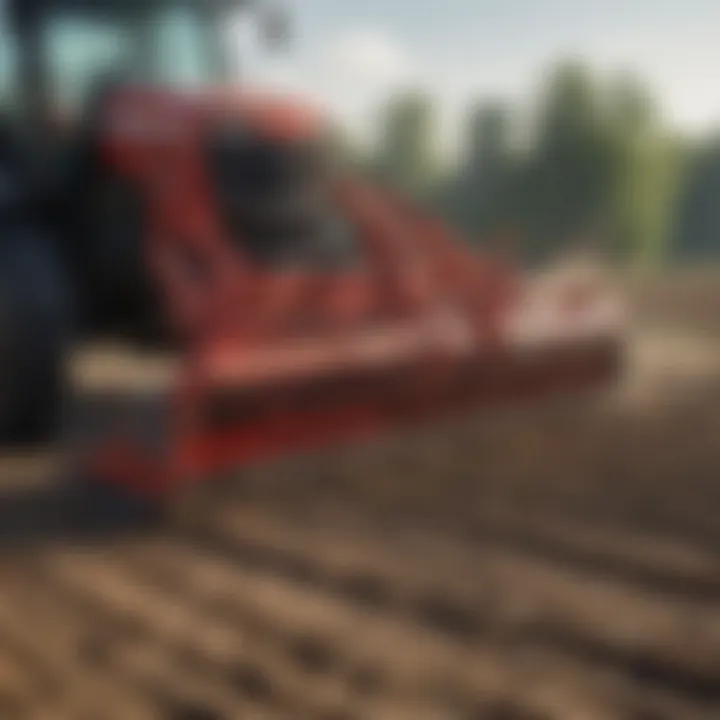
Plow Attachments
Varieties of Plows
Plow attachments have evolved significantly over time. There are several types of plows available, each designed for specific soil conditions and farming practices. A common type is the moldboard plow. It turns the soil effectively to prepare for planting. Another valuable variant is the chisel plow. It can break up tougher soils without turning them over completely. This specific aspect, the variety of plows, contributes to more effective soil management. Moldboard plows can be beneficial when soil needs full turnover, but they can also result in soil erosion—a disadvantage.
Features of Modern Plows
Modern plows come with various features that enhance their capabilities. Many of them have adjustable depths and configurations, allowing farmers to optimize the plowing process based on their needs. Such features make them a popular choice because they enable better adaptation to different crop types and soil conditions. Some plow models even offer quick-change systems for enhanced versatility. However, the initial investment might be higher than basic models, which can be a consideration for farmers operating on tighter budgets.
Cultivators
Different Cultivation Methods
Cultivators come in various designs and serve multiple cultivation methods. These tools are essential for soil aeration, weed control, and crop preparation. Among methods, the use of rotary cultivators is increasing. They can till the soil thoroughly and reduce compaction. This unique aspect makes them particularly useful for achieving optimal soil structure. However, they may require more horsepower than traditional alternatives, which some farmers must factor into their equipment decisions.
Benefits for Soil Health
The use of cultivators significantly benefits soil health. They help in maintaining soil structure by preventing compaction and allowing water to penetrate efficiently. Cultivators can also incorporate organic matter back into the soil. This key characteristic makes them an excellent option for sustainable farming practices. By enhancing microbial activity, cultivators contribute to nutrient cycling which ultimately promotes better crop health. Still, if used excessively, they risk tearing up too much soil, leading to disruption of soil ecosystems.
Seeders and Planters
Precision Planting Technology
Precision planting technology is becoming more prevalent in modern agriculture. This technology ensures seeds are planted at the right depth and spacing, leading to better crop yields. The systems use GPS and variable rate technology to optimize planting patterns. Such features highlight the effectiveness of precision planting technology. It enables farmers to reduce seed waste and enhance nutrient utilization. However, the technology may involve a learning curve and could be cost-prohibitive for smaller operations.
Seed Distribution Methods
Different seed distribution methods also play a crucial role in planting efficiency. The methods include broadcasting, dibbling, and drill seeding. Drill seeding, for instance, places seeds directly into the soil row by row, which can be more efficient than broadcasting. This method’s key characteristic is the precision it offers. It minimizes seed overlap and maximizes use of resources. Though more effective, it requires careful calibration and equipment maintenance to achieve optimal results.
Harvesting Attachments
Types of Harvesters
Harvesting attachments come in various types tailored to specific crops. For example, combine harvesters are versatile and can be used for grains and other crops. This adaptability makes them a highly beneficial choice for diverse farming operations. Conversely, specialized harvesters, such as those for corn or sugarcane, provide specific advantages for niche markets. However, investing in multiple specialized harvesters may not be practical for all farmers, which is often a dilemma.
Integration with Automation
The integration of automation into harvesting processes is transforming how farmers work. Many modern harvesters now come equipped with automated features that streamline operations. This integration improves efficiency and reduces labor costs. For instance, some harvesters can adjust cutting heights automatically based on crop type and conditions, which is a key innovation. However, this technology requires ongoing maintenance and may not be feasible for every farming scale.
Mowers and Mulchers
Types of Mowers
Mowers are essential for managing grass and crop residue. There is a range of mowers, such as rotary mowers and sickle bar mowers. Rotary mowers are commonly used due to their versatility and ease of operation. They provide a cleaner cut, helping maintain healthy lawns and pastures. Each type of mower presents its unique features, and understanding these options can help choose the right tool. However, the requirement for horsepower varies between mower types, which may impact choice based on tractor compatibility.
Efficiency in Grass Management
Efficient grass management is crucial for maintaining healthy pastures and lawns. Mowers and mulchers play a significant role in this aspect. They reduce waste by cutting down excess grass and returning nutrients back to the soil. This can help improve soil fertility. The key characteristic is their ability to handle different types of grass sizes and density. Some mowers can be adjusted for height, offering flexibility. However, if not managed carefully, mowing can result harsh wear on tools over time.
Technological Innovations Driving Attachments
The landscape of agriculture is evolving. Technological innovations are crucial in enhancing the efficiency, productivity, and sustainability of farming operations. This section explores various advancements in tractor attachments, focusing on three key areas: smart technology integration, robotics, and eco-friendly designs. These innovations not only improve agricultural practices but also address pressing challenges like environmental impact and operational costs.
Smart Technology Integration
GPS and GIS Applications
GPS and GIS (Geographic Information Systems) applications are transforming the way farmers operate their equipment. By utilizing satellite technology, farmers can pinpoint their exact location in a field. This accuracy allows for more precise farming practices such as variable rate planting and targeted nutrient application. The key characteristic of GPS technology is its ability to gather and analyze data in real-time, leading to informed decision-making.
One unique feature of GPS applications is their integration with field mapping software. This software provides farmers with comprehensive visuals of their land, allowing them to optimize their tractor's paths. Advantages of using GPS include improved accuracy, reduced material waste, and enhanced crop management. However, challenges such as initial setup costs and the need for technical skills cannot be overlooked.
Telematics
Telematics is another critical component of modern agricultural attachments. This technology gathers and transmits data about the operation of farm equipment. Its main contribution is improved monitoring and management of machinery. The ability to track equipment use, fuel consumption, and maintenance needs helps farmers make better management decisions.
A key characteristic of telematics systems is their ability to provide actionable insights through mobile applications. This accessibility makes it easy for farmers to monitor their equipment from anywhere. Advantages include significantly reduced downtime and informed decision-making. On the downside, there can be issues with data privacy and reliance on internet connectivity, which may be inconsistent in rural areas.
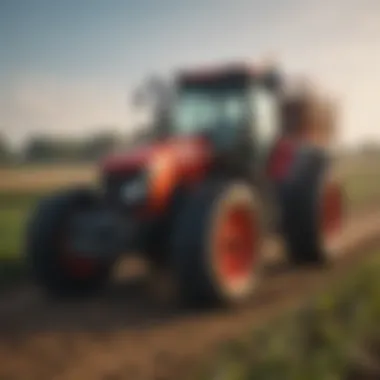
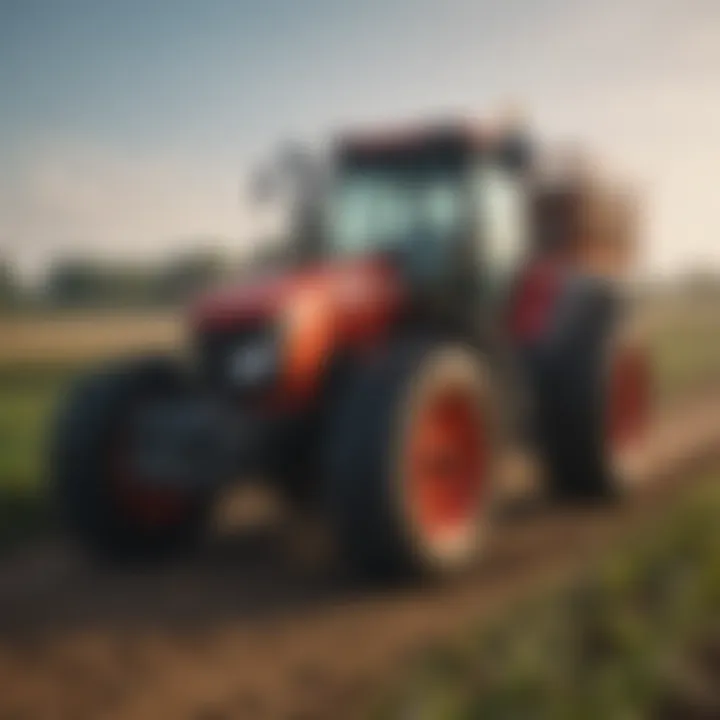
Robotics in Agriculture
Robotics is set to play a major role in transforming agricultural attachments. Autonomous tractors equipped with robotic technology can perform various tasks, from planting to harvesting, without human intervention. This innovation is essential, particularly as the industry faces labor shortages. Robotics improve efficiency by ensuring consistent and precise operations.
Eco-Friendly Attachments
Sustainable Materials
The use of sustainable materials in tractor attachments is gaining momentum in the agricultural sector. Choosing biodegradable and recyclable materials reduces waste and promotes environmental responsibility. One of the most popular choices for eco-friendly attachments is composite materials. They are lighter and more durable than traditional options, which helps improve fuel efficiency.
An important aspect of sustainable materials is their ability to withstand prolonged use and harsh conditions. However, these materials can sometimes be costlier upfront. Long-term benefits such as reduced environmental impact and compliance with regulations make them a wise choice for many farmers.
Reduction of Carbon Footprint
Reducing the carbon footprint of agricultural operations is vital for addressing climate change. Innovative attachments designed with fuel efficiency in mind help in this regard. High-efficiency engines and improved aerodynamics are examples of features that contribute to lower emissions.
The primary characteristic of this technology is its focus on energy efficiency. Innovative designs often require fewer resources for similar or enhanced outputs. This results in long-term savings for farmers as operational costs drop. However, transitioning to these technologies may require significant investment and a shift in farming practices.
"Investing in technological innovations is no longer optional if we want to ensure sustainable farming for future generations."
In summary, leveraging technological innovations in tractor attachments brings various benefits to the agricultural sector. From enhancing operational efficiency to reducing environmental impact, these advancements are paving the way for a more productive and sustainable future in agriculture.
Benefits of Using Innovative Attachments
Innovative tractor attachments transform the agricultural landscape by introducing a multitude of benefits. The integration of these advanced tools leads to substantial enhancements in operational efficiency, making them essential for modern farming. Understanding these benefits helps every farmer or agricultural enthusiast make informed decisions about equipment choices.
Increased Productivity
Productivity can drastically improve with the right tractor attachments. With tools designed to perform multiple tasks, farmers can accomplish more in less time. For example, a combined seeder and fertilizer attachment can seed and fertilize simultaneously, reducing the time needed for each operation. This technology allows for better use of labor resources, as fewer workers are needed to operate equipment that does multiple tasks. As a result, farmers can redirect labor to other critical areas of their operation.
Additionally, innovative attachments often come with features that enhance speed and accuracy. Many modern tools utilize GPS technology, allowing for precise operations and minimizing overlap or missed areas. This ensures that the land is utilized optimally, leading to greater production capacity.
Cost Efficiency
Cost efficiency is another critical advantage of using innovative tractor attachments. Although the initial investment may be high, the long-term savings can be significant. These attachments are engineered for durability and efficiency, reducing machinery wear and tear. This longevity means farmers do not have to frequently replace equipment, lowering overall operational expenses.
Moreover, many attachments optimize fuel consumption, which is a substantial cost in farming operations. For instance, no-till planters reduce the need for multiple passes over the land, dramatically cutting down fuel usage. The efficient use of inputs, such as seeds and fertilizers, also leads to lower costs over time. By minimizing waste and maximizing resource use, farmers enhance their profit margins.
Enhanced Crop Yield
The ultimate goal of any farming endeavor is to increase crop yield. Innovative tractor attachments play a crucial role in achieving this objective by improving planting accuracy and soil health. Precision planting technologies allow for proper seed spacing and depth, leading to healthier plants. This technology ensures that each seed receives adequate nutrients and moisture, which is critical for strong growth.
In addition, some attachments include systems designed to maintain soil health. For instance, implements that reduce soil compaction can significantly improve water drainage and root growth. Responsible soil management leads to improved crop resilience against pests and adverse weather conditions, ultimately boosting yields.
"Investing in proper tractor attachments is not just about equipment; it's about embracing advancements that lead to sustainable and profitable agriculture."
In summary, the benefits of using innovative attachments extend far beyond the immediate results seen in the field. They contribute to a more efficient, cost-effective, and high-yield agricultural practice that meets both present and future challenges.
Selecting the Right Attachments
Selecting the proper attachments for tractors is a crucial factor in achieving farming efficiency. The variety of available options makes it essential to understand the intricate relationship between the tractor and its attachments. This selection process can significantly affect not just performance, but also productivity, resource management, and ultimately profit margins. Understanding the key elements and considerations when choosing the right attachments is paramount for all farmers who aim for optimal operation and yield.
Compatibility with Tractors
Compatibility is the first element to consider when selecting attachments. Not all attachments fit all tractors. Different brands and models have unique specifications and mounting systems. For example, equipment from John Deere may not connect correctly with a Kubota tractor due to variations in linkages and hydraulic systems.
To ensure compatibility, farmers should consult the tractor’s user manual or manufacturer's specifications. Additionally, many manufacturers provide guidance on which attachments work with their tractors. This diligence can prevent costly mistakes and downtime.
"Compatibility between tractor and attachment reduces operational risks and enhances the performance of the equipment."
Assessing Farm Needs
Understanding the specific needs of the farm is equally important. The tasks performed on a farm can vary based on crop type, soil condition, and farming methodology. For instance, a farm primarily cultivating corn may require different attachments than one focused on livestock.
Farmers should evaluate the following:
- Soil Type: Hard or rocky soil may require sturdier plows and tools.
- Crop Types: Different crops may demand specialized planting or harvesting equipment.
- Land Size: Larger fields may need attachments that enhance efficiency over speed and vice versa.
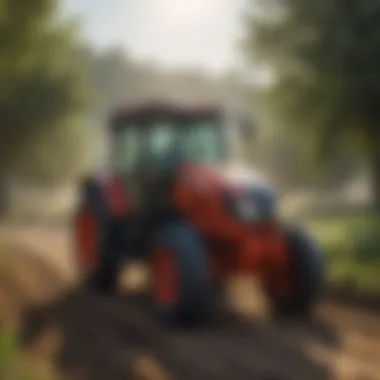
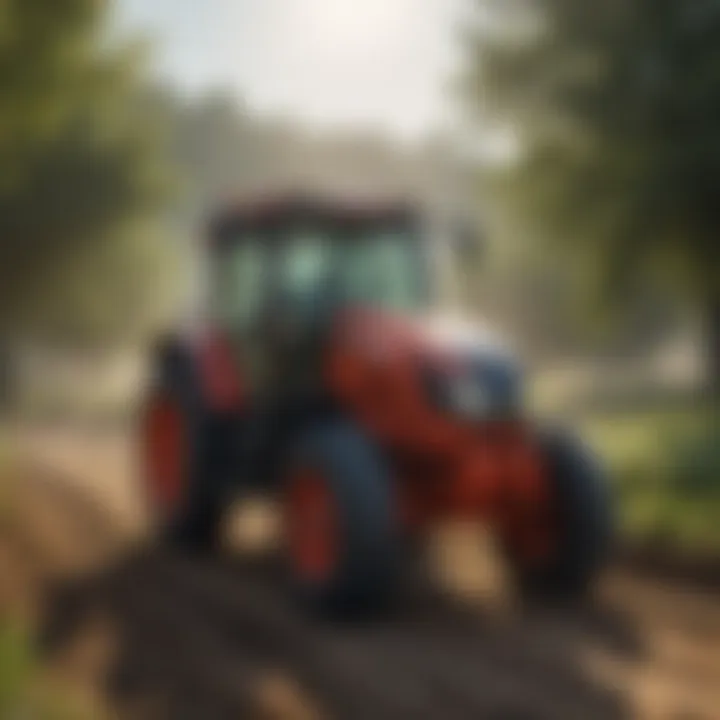
By aligning attachments with farming needs, farmers can maximize output and ensure resource optimization.
Budget Considerations
Finally, budget plays a crucial role in the selection process. High-quality attachments often come at a premium price, but they might provide better longevity and efficiency. Farmers should consider long-term costs, including maintenance and the potential ROI from higher productivity.
When budgeting for attachments, consider these factors:
- Initial Costs: Look for deals and take seasonality into account for potential savings.
- Maintenance Costs: Understand the maintenance requirements for each attachment.
- Resale Value: Some attachments retain value better than others; consider this for long-term financial planning.
Choosing the right tractor attachments requires thorough research and strategic planning. The right combinations impact the farm's operational efficiency and sustainability in the long run.
Case Studies of Innovative Attachments
Case studies serve as a vital part in understanding the real-world applications and effectiveness of innovative tractor attachments. They provide insight into actual usage scenarios where these attachments have been implemented successfully. Examining these cases highlights lessons from different farming operations, showing the adaptability and versatility of modern agricultural technologies. This section will explore successful implementations of these attachments and the lessons learned from those experiences.
Successful Implementations
Many farming operations have adopted unique tractor attachments to boost efficiency and productivity. For instance, in California, a vineyard utilized specialized mowers to manage weeds between rows of grapevines. This approach not only reduced labor costs but also minimized chemical herbicide use, showcasing a commitment to environmentally friendly practices.
Another example is a Midwest corn farmer who integrated precision seeding attachments that utilize GPS technology. This method ensured optimal seed placement and efficient spacing, leading to increased crop yields and reduced seed waste. By leveraging technology, the farmer significantly improved operational precision and reduced input costs.
These case studies highlight how specific attachments can meet varied agricultural needs, eliminating inefficiencies traditionally associated with farming practices.
Lessons Learned
Along with successes, lessons learned from these implementations can guide future considerations in attachment selection and usage. Firstly, compatibility between tractor and attachment is paramount. As seen in the vineyard case, choosing an attachment incompatible with the existing tractor resulted in operational delays and increased costs.
Secondly, training on new technologies is essential. The Midwest farmer realized that while the precision seeding technology improved efficiency, without adequate training for operators, the benefits could not be fully realized.
Lastly, it is vital to evaluate the long-term sustainability and cost implications. The vineyard's shift to mower attachments demonstrated that upfront costs could be offset by long-term savings in labor and chemicals. Farmers should assess the return on investment for any new attachment, considering both short-term and long-term impacts on their operations.
Understanding real-world applications of tractor attachments through case studies aids farmers in making informed decisions that enhance their productivity and efficiency.
By reflecting on these examples and lessons, farmers can better navigate the complexities of agricultural attachments, ensuring they choose solutions that align with their operational goals.
Future Trends in Tractor Attachments
The agricultural sector continuously seeks improvement. Innovations in tractor attachments are crucial to meeting the digital demands of modern farming. Understanding future trends will helps farmers adapt and grow. This section covers two key areas: emerging technologies and predicted industry changes. These elements are relevant for anyone involved in agriculture, from farmers to agricultural engineers.
Emerging Technologies
Technological advancements shape the future of tractor attachments. Key areas of innovation involve improved software, automation, and smart tools. These technologies can enhance versatility and efficiency.
- Precision Farming Tools: Systems that integrate GPS and GIS data are game-changers. They allow farmers to make data-driven decisions. This can lead to more efficient use of resources and reduced waste.
- Automation and Robotics: The rise of autonomous tractors is significant. These vehicles can operate with minimal human intervention. This shift may reduce labor costs and improve safety in fields.
- Smart Sensors and IoT: Sensors can monitor soil conditions in real-time. The data collected includes moisture levels, nutrient availability, and temperature. This information helps farmers optimize their farming techniques.
- Modular Attachments: Future attachments may be designed to be more adaptable. Farmers could easily switch tools for different tasks. This flexibility can save time and increase overall productivity.
"Embracing innovative technologies not only increases yields but also promotes sustainable practices."
Predicted Industry Changes
As farming evolves, industry changes will shape the landscape for tractor attachments. These shifts will influence how farmers engage with their environment and use technology.
- Sustainability Focus: There will be a stronger demand for eco-friendly options. Farmers are increasingly concerned about their carbon footprint. Innovations that use sustainable materials or reduce emissions will be prioritized.
- Collaboration and Partnerships: The industry will see more collaboration between tech companies and farmers. Partnerships may lead to tailored solutions that meet specific farming needs.
- Increased Regulatory Standards: As technology advances, regulations will evolve. Expect more stringent measures to ensure safe and efficient farming practices. Compliance will be crucial for manufacturers of attachments.
- Data-Driven Agriculture: As more data becomes available, farmers will increasingly rely on analytics. This trend will require robust data management tools to enhance decision-making.
- Consumer Demand for Transparency: There will be a growing demand for transparency in farming practices. Farmers may need to showcase sustainability and efficiency in their operations. Innovations in tracking and reporting may help them meet these expectations.
In summary, the future of tractor attachments is bright but complex. Embracing these trends can create opportunities for growth and improvement. Farmers who stay ahead of the curve will likely benefit greatly from these innovations.
End
In this final section, we will explore the significance of innovative tractor attachments and their role in transforming agricultural practices. The expansion and adoption of these technologies are not merely a trend; they mean a substantial shift in how farms operate today. As various sectors in agriculture continue to evolve, understanding the integration of these attachments can provide essential insights for improving efficiency, productivity, and sustainability.
Recap of Key Insights
- Diverse Choices: Tractor attachments come in many varieties, each designed to perform specific tasks. From plows to seeders, the diversity reflects the tailored needs of modern agriculture. Farmers now have the ability to enhance productivity tailored to their unique landscapes and crops.
- Technological Integration: The integration of smart technologies like GPS and telemetry has proven to strengthen the capabilities of traditional attachments. These innovations lead to more precise measurements, ultimately lowering costs while maximizing efficiency.
- Environmental Sustainability: Eco-friendly attachments also present a pathway to more sustainable agricultural practices. Utilizing materials and designs that lower the carbon footprint encourages responsible farming and aligns with global efforts toward sustainability.
"The adoption of advanced tractor attachments not only optimizes farm operations but also significantly contributes to environmental preservation."
- Economic Impact: The benefits of using such innovative tools are reflected in the bottom line. Increased productivity and reduced operational costs provide farmers with a more extensive economic buffer in fluctuating markets.
- Future Outlook: Staying attuned to emerging technologies ensures farmers can remain competitive. As the agricultural landscape changes, being informed and adaptive can create further opportunities for growth and innovation.
Final Thoughts on the Importance of Innovation
The necessity for innovation in agriculture cannot be overstated. As climate concerns, population growth, and resource scarcity become more pressing, farmers must leverage technological advancements to meet future demands. Innovative tractor attachments play a pivotal role in this transformation.
Resulting effects of ongoing innovation include:
- Improved Crop Yield: The efficiency gained through these attachments promotes better soil management and crop health, leading to higher yields.
- Resource Conservation: Precision farming technologies support better resource management, reducing waste and enhancing sustainability.
- Adaptability: As global agricultural conditions become more unpredictable, incorporating versatile attachments allows farmers to adapt swiftly to changes in climate and market needs.



